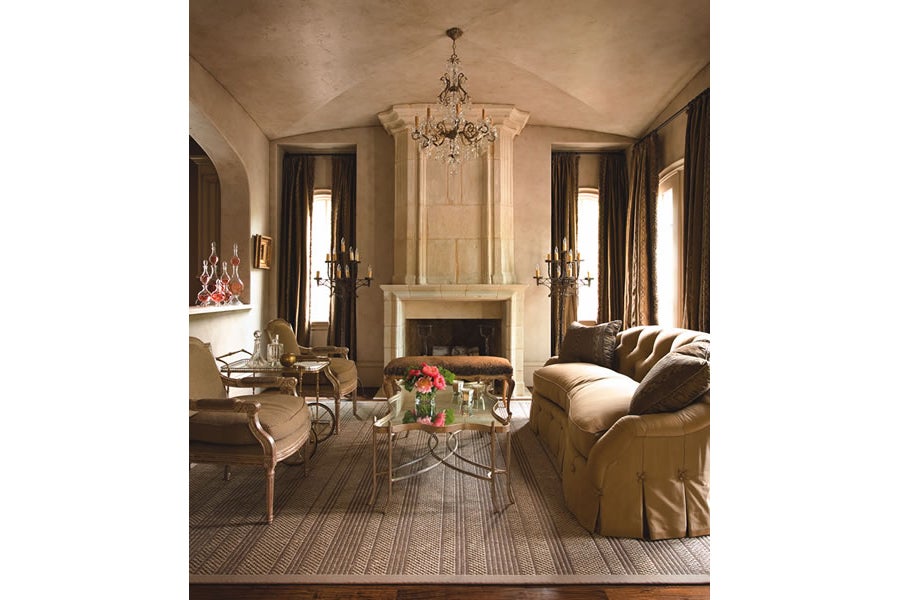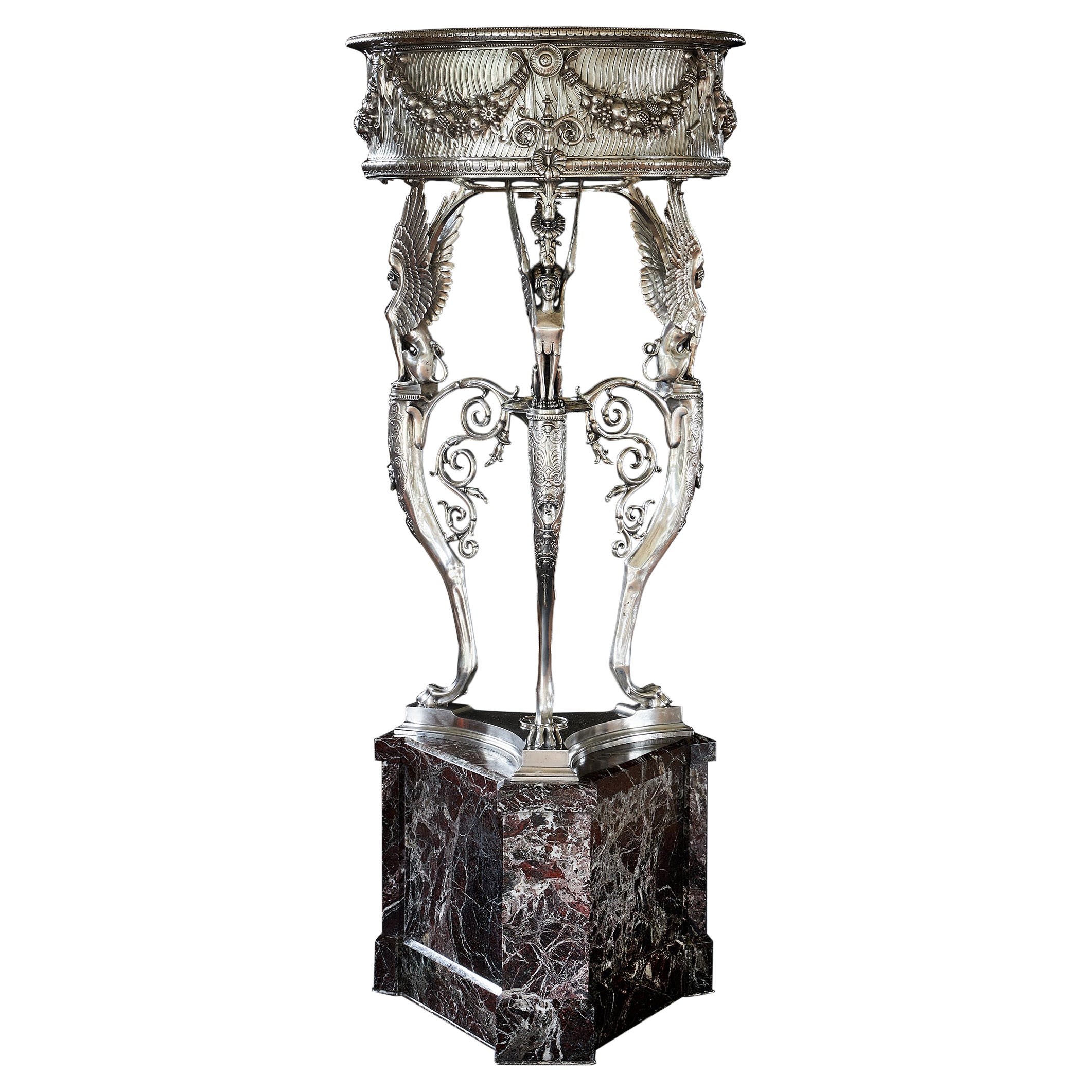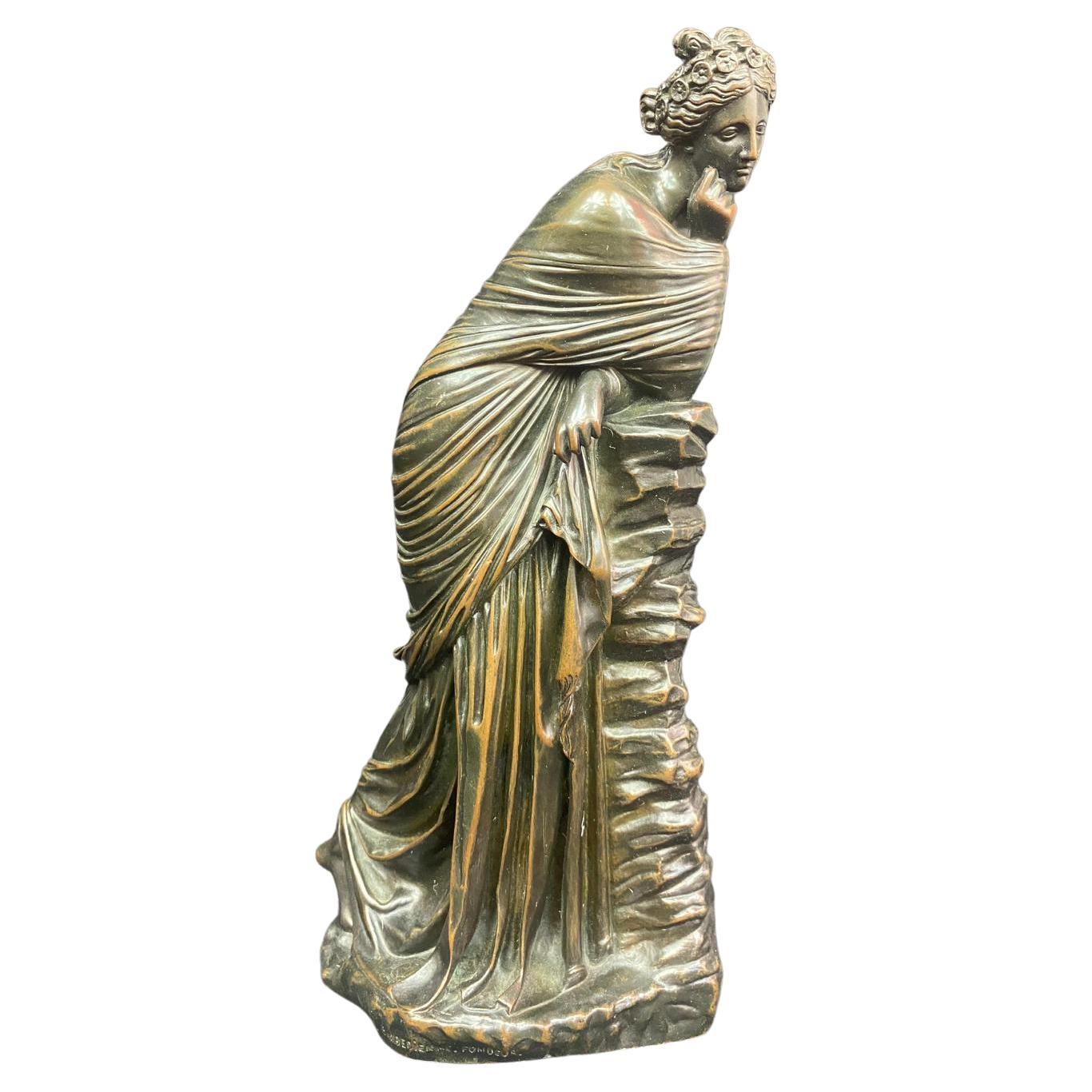Items Similar to Mid-19th Century Bronze Sculpture by Ferdinand Barbedienne from France
Want more images or videos?
Request additional images or videos from the seller
1 of 7
Mid-19th Century Bronze Sculpture by Ferdinand Barbedienne from France
About the Item
This bronze sculpture origins from France, circa 1850. Signed by Ferdinand Barbedienne.
Ferdinand Barbedienne is born on 6 August 1810. He was a French metalworker and manufacturer, who was well known as a bronze founder.
He started his career as a dealer in wallpaper in Paris. In 1838 he went into partnership with Achille Collas (1795-1859), who had just invented a machine to create miniature bronze replicas of statues. Together they started a business selling miniatures of antique statues from museums all over Europe, thus democratizing art and making it more accessible to households. From 1843 they extended their scope by reproducing the work of living artists and also diversified by making enamelled household objects. With the outbreak of the Franco-Prussian war in 1870 the firm briefly had to switch to cannon founding owing to the shortage of metals but resumed business afterwards. Following Barbedienne's death in 1892, he was buried in the Père-Lachaise cemetery and the firm was carried on by his nephew Gustave Leblanc until 1952.
- Dimensions:Height: 28 in (71.12 cm)Width: 9.25 in (23.5 cm)Depth: 8 in (20.32 cm)
- Materials and Techniques:
- Place of Origin:
- Period:
- Date of Manufacture:1850
- Condition:Wear consistent with age and use.
- Seller Location:Dallas, TX
- Reference Number:

About the Seller
4.8
Gold Seller
These expertly vetted sellers are highly rated and consistently exceed customer expectations.
Established in 1990
1stDibs seller since 2012
600 sales on 1stDibs
Typical response time: 2 hours
- ShippingRetrieving quote...Ships From: Dallas, TX
- Return PolicyA return for this item may be initiated within 7 days of delivery.
More From This SellerView All
- 19th Century Bronze Sculpture from FranceLocated in Dallas, TXThis bronze sculpture origins from France, circa 1880.Category
Antique Late 19th Century French Figurative Sculptures
MaterialsBronze
- Early 19th Century Bronze Sculpture from FranceLocated in Dallas, TXThis bronze sculpture origins from France, circa 1820.Category
Antique Early 19th Century French Figurative Sculptures
MaterialsBronze
- Early 19th Century Polychrome Wood Sculpture from FranceLocated in Dallas, TXThis polychrome wood sculpture origins from France, circa 1800.Category
Antique Early 19th Century French Figurative Sculptures
MaterialsWood
- Late 19th Century Bronze Bust SculptureLocated in Dallas, TXVictor Leopold Bruyneel is a Belgian sculptor who was born in 1859. Girl with a Floppy Hat Bronze Figure for Tiffany & Co.Category
Antique Late 19th Century French Busts
MaterialsBronze
- 19th Century Bronze Chandelier from FranceLocated in Dallas, TXThis bronze chandelier with 12 lights origins from France. 19th century period.Category
Antique 19th Century French Chandeliers and Pendants
MaterialsBronze
- 19th Century Bronze Chandelier from FranceLocated in Dallas, TXThis bronze chandelier origins from France, circa 1890. 14 lights. Wired for the US. The top is made for candles.Category
Antique Late 19th Century French Chandeliers and Pendants
MaterialsBronze
You May Also Like
- Ferdinand Barbedienne Bronze Boy & Goose Sculpture 19th CenturyBy Ferdinand BarbedienneLocated in Bishop's Stortford, HertfordshireA finely patinated French antique bronze by Ferdinand Barbedienne portraying a a young boy caressing a large goose. The figure is mounted on an angled and shaped base and is signed '...Category
Antique 19th Century French Napoleon III Animal Sculptures
MaterialsBronze
- Ferdinand Barbedienne " Diana" Sculpture, 19th CenturyBy Ferdinand BarbedienneLocated in Madrid, ES"Diane de Gabies" French sculpture, late 19th century. Patinated bronze with "Ferdinand Barbedienne" foundry marks. Height: 51 cm. Very good condition.Category
Antique 19th Century French Baroque Figurative Sculptures
MaterialsBronze
- 19th Century Silvered Bronze Athénienne Jardinière by Ferdinand BarbedienneBy Ferdinand BarbedienneLocated in Oxfordshire, United KingdomA French silvered-bronze athénienne by Ferdinand Barbedienne, Paris, last quarter 19th century with a revolving liner, the frieze applied with bucrania suspending ribbon-tied berried laurel swags above a border of bellflowers on a stippled ground above three seated female sphinxes issuing stylised foliage and scrolls on lion monopodia cast with the mask of Hercules, scrolling foliage and anthemions joined by stretchers, raised on a concave-sided triform marble base on a further thin silvered-bronze base, inscribed to the tripod base 'F. BARBEDIENNE' Measures: 103.3cm. high, 41.5cm. diameter; 3ft. 4 3/8 in, 1ft. 4 1/4. This impressive athénienne is a key reminder of the longevity of a particular model and design’s success from Antiquity through to the 19th century and up until this day. Typically known as the ‘Trépied du Temple d’Isis’, this athénienne is designed after the Roman antique originally found at Pompeii and now at the Museo Archeologico Nazionale, Naples (fig.1). From being for example an inspiration for the baptismal font of Napoléon’s son in 1811, this model was the inspiration to many highly skilled makers throughout the 19thcentury such as the Manfredini brothers from Milan and of course the Parisian well-established bronze founder Ferdinand Barbedienne who executed the present example. The Temple of Isis was a Roman temple dedicated to the Egyptian goddess Isis and was among one of the first discoveries during the excavation of Pompeii in 1764. Certainly considered as one of the most elegant examples of antique tripods, the existence of this model was then popularized to the rest of Europe via prints, one of the first being by Giovanni Battista Piranesi in 1779. This type of tripod was also popularised by an engraving in C. Percier and P. Fontaine’s, Receuil de Décorations Intérieures of 1801. Interestingly, there is also a watercolour now in the Musée Carnavalet, Paris, showing this type of tripod displayed at the 1801 Exposition des Produits de L’Industrie in the Louvre. The passion for Greek and Roman Art in the 19th century. The discovery of Pompeii and Herculaneum around the middle of the 18th century gave rise to a new passion for Antiquity and the excavated masterpieces renewed the repertoire of fine and decorative arts and served as models for Neoclassicism. Members of the aristocracy as well as connoisseurs, particularly in England, completed their education by undertaking a ‘Grand Tour’ of Italy and often fell victim to the recently unearthed Greek and Roman artefacts...Category
Antique 19th Century French Grand Tour Planters, Cachepots and Jardinières
MaterialsMarble, Silver Plate, Bronze
- 19th Century French Bronze Tazza Dish by Ferdinand BarbedienneBy F. Barbedienne FoundryLocated in Casteren, Noord-BrabantA Roman-classical style decorative bowl, cast in bronze, brown patinated finish. This antique coupe is signed by Ferdinand Barbedienne (France, 1810-1892). In the center a depiction ...Category
Antique Late 19th Century French Classical Roman Decorative Bowls
MaterialsBronze
- Bronze Sculpture - Ancient Woman - Barbedienne / Colas - France - 19thLocated in CANNES, FR"Bronze Sculpture - Ancient Woman - Barbedienne / Colas - France - 19th" Bronze sculpture, representing a woman in the ancient, Polymnia* Barber smelter, mechanical reduction by the...Category
Antique 19th Century French Greco Roman Figurative Sculptures
MaterialsBronze
- 'La Jeunesse' 19th Century bronze sculpture by Chapu and BarbedienneBy Henri Chapu, Ferdinand BarbedienneLocated in London, GBThis fine and exceptionally cast patinated bronze sculpture is the work of two masters of the decorative arts, Henri Chapu (French, 1833-1891) and Ferdinand Barbedienne (French, 1810-1892). Chapu was responsible for the design of the sculpture which is titled 'La Jeunesse' and depicts a young girl swathed in Classical style clothing reaching up to place a laurel branch on top of a wall. The original work was crafted in white marble as part of a monument to Henri Regnault...Category
Antique 19th Century French Neoclassical Figurative Sculptures
MaterialsBronze
Recently Viewed
View AllMore Ways To Browse
Midcentury French Antiques
Machine 19th
1795 French
French Prussian
Antique Furniture Wallpaper
Antique Replicas
Museum Replica
Antique Replica Furniture
Antique Furniture Replicas
Wallpaper Mid Century Wallpaper
Wallpaper Mid Century
Replica Bronze
French Bronze Miniatures
War Statue
Antique Scopes
Antique French Wallpaper Antiques
Antique French Wallpaper
Midcentury Wallpaper





